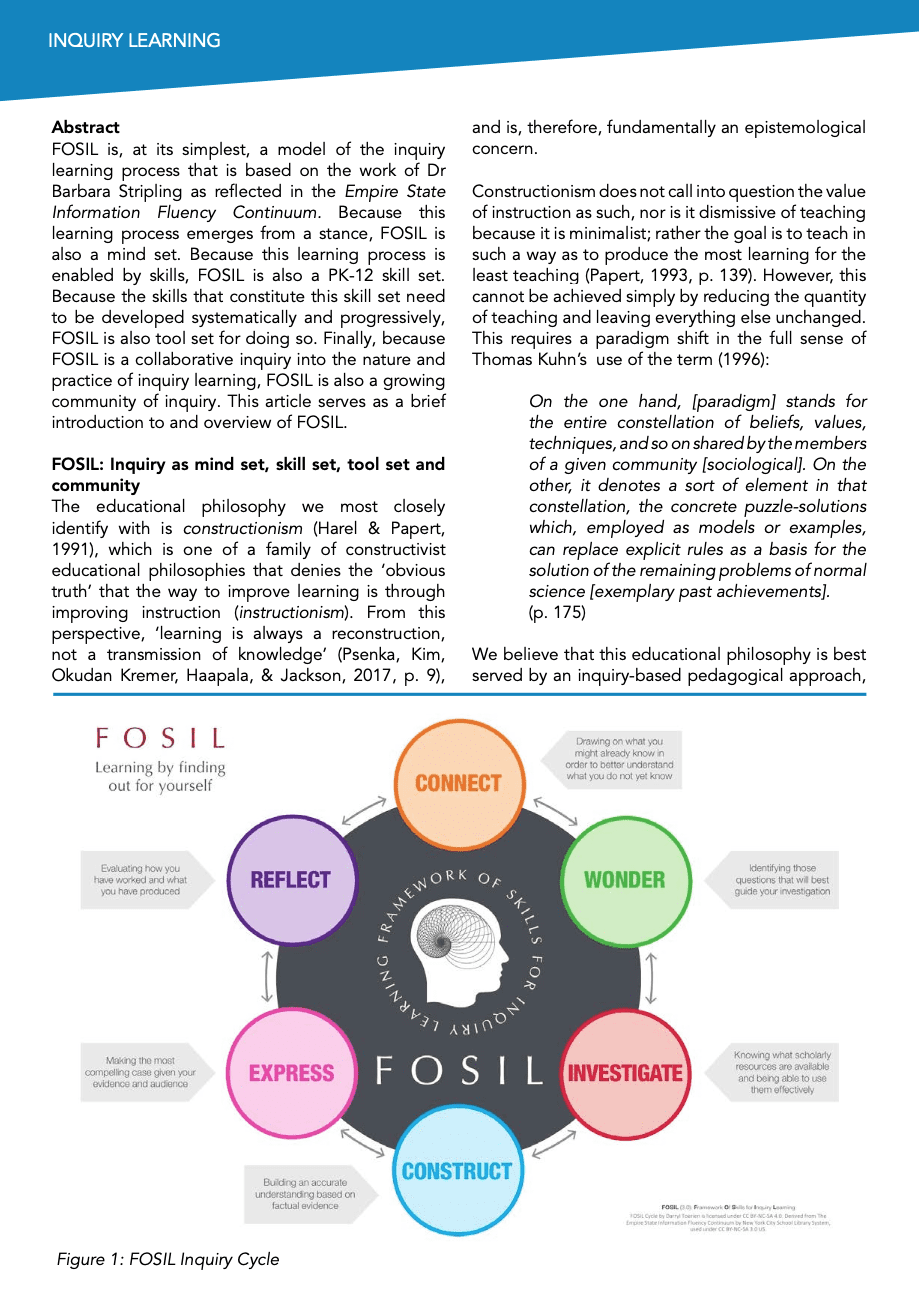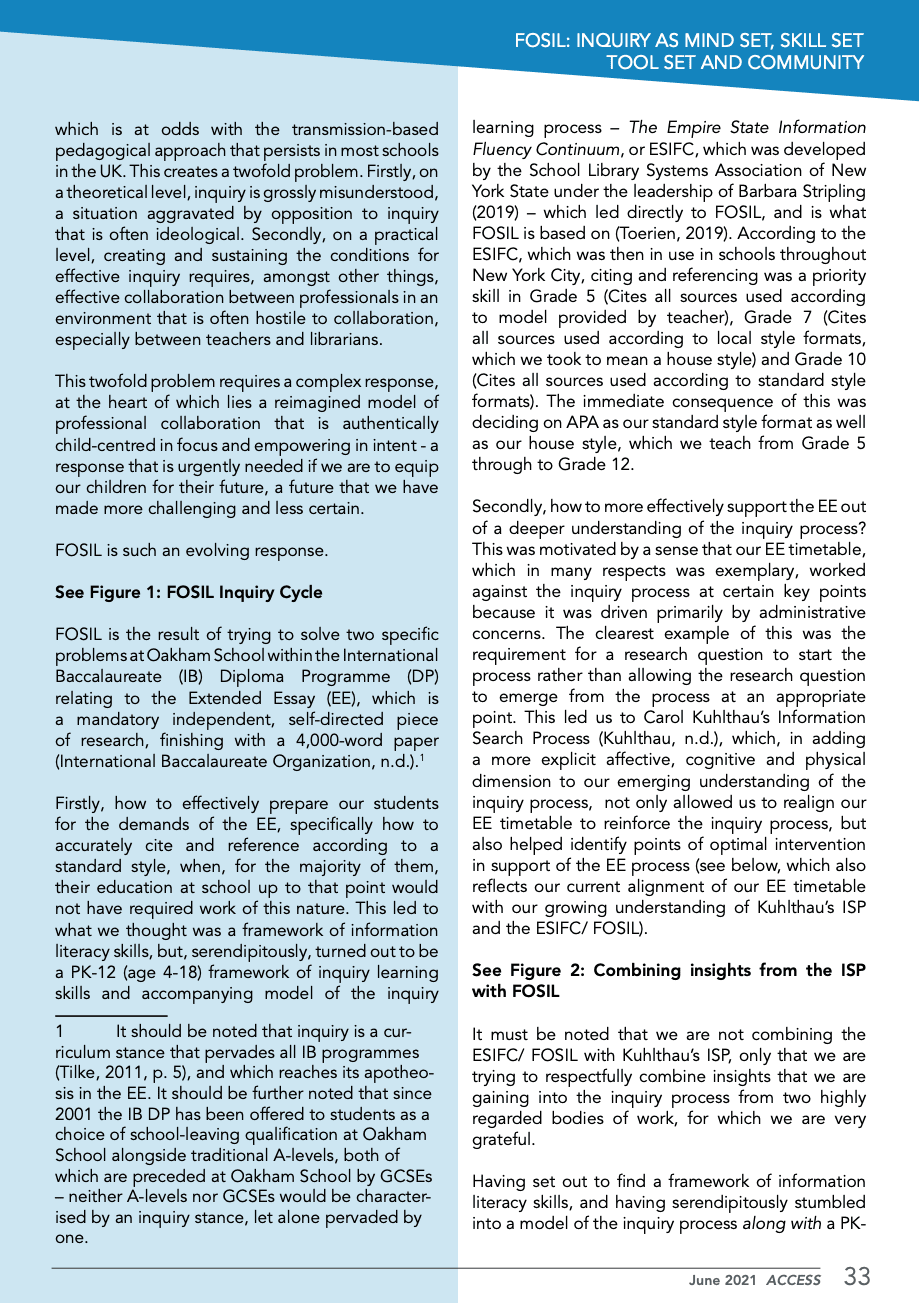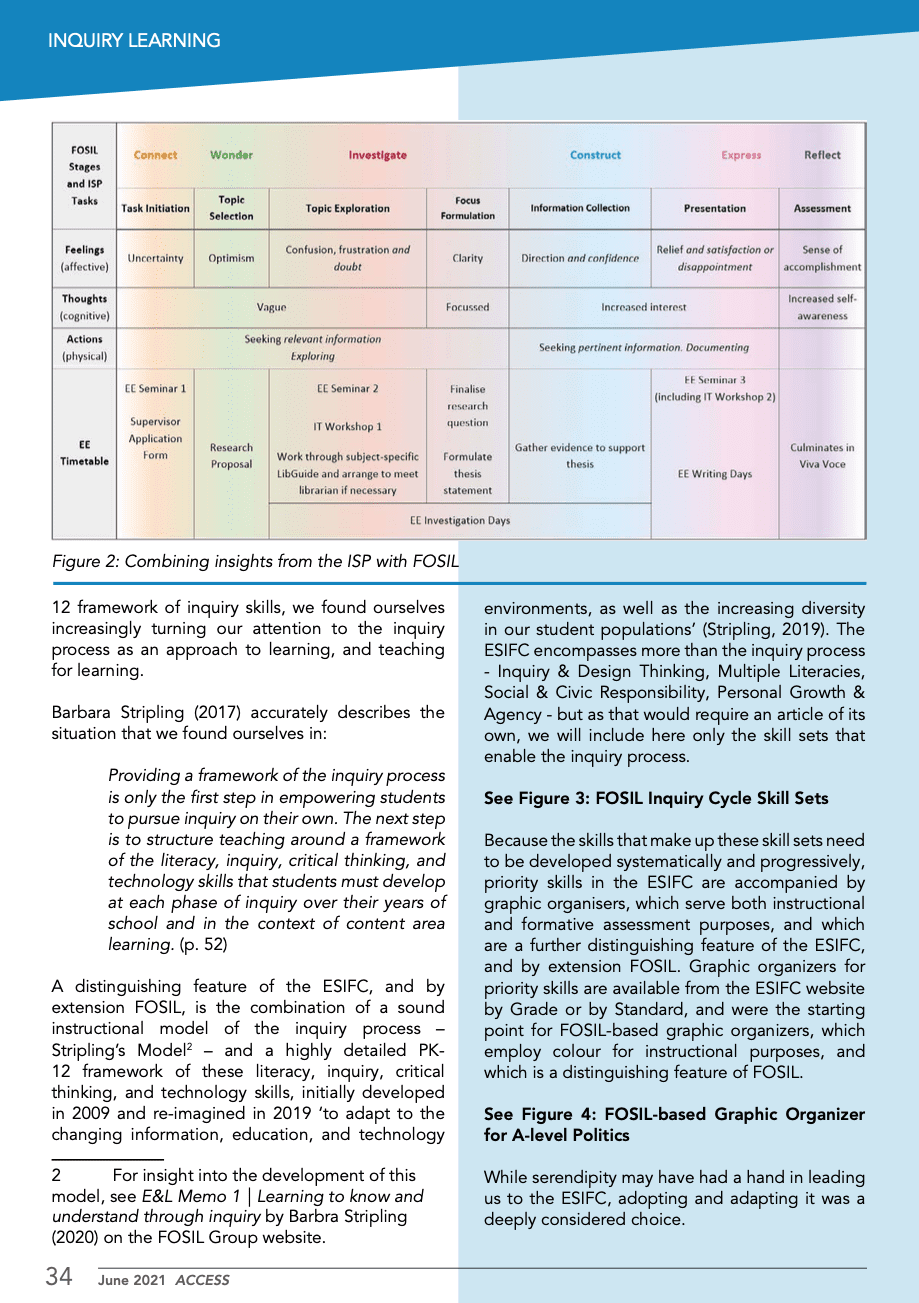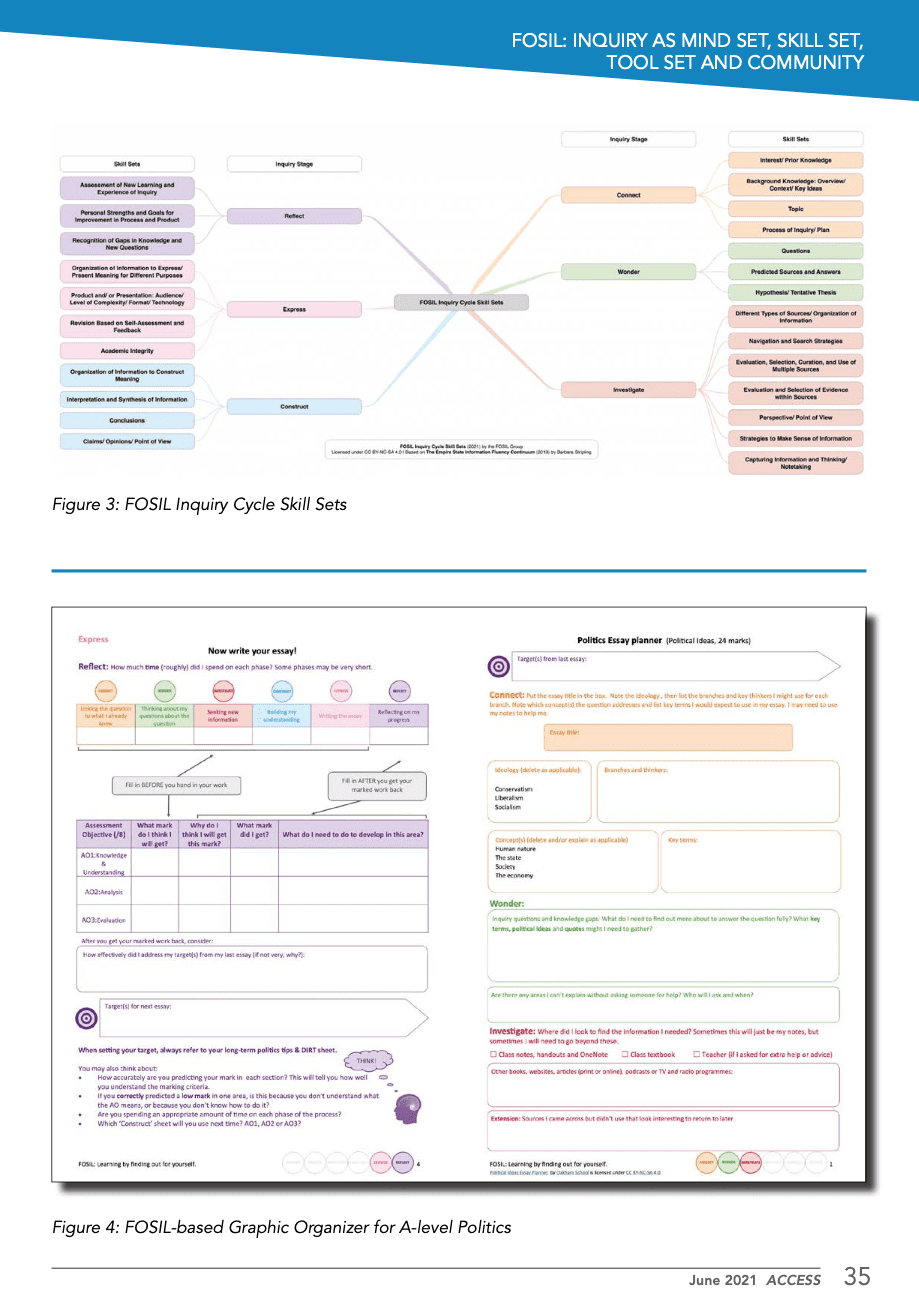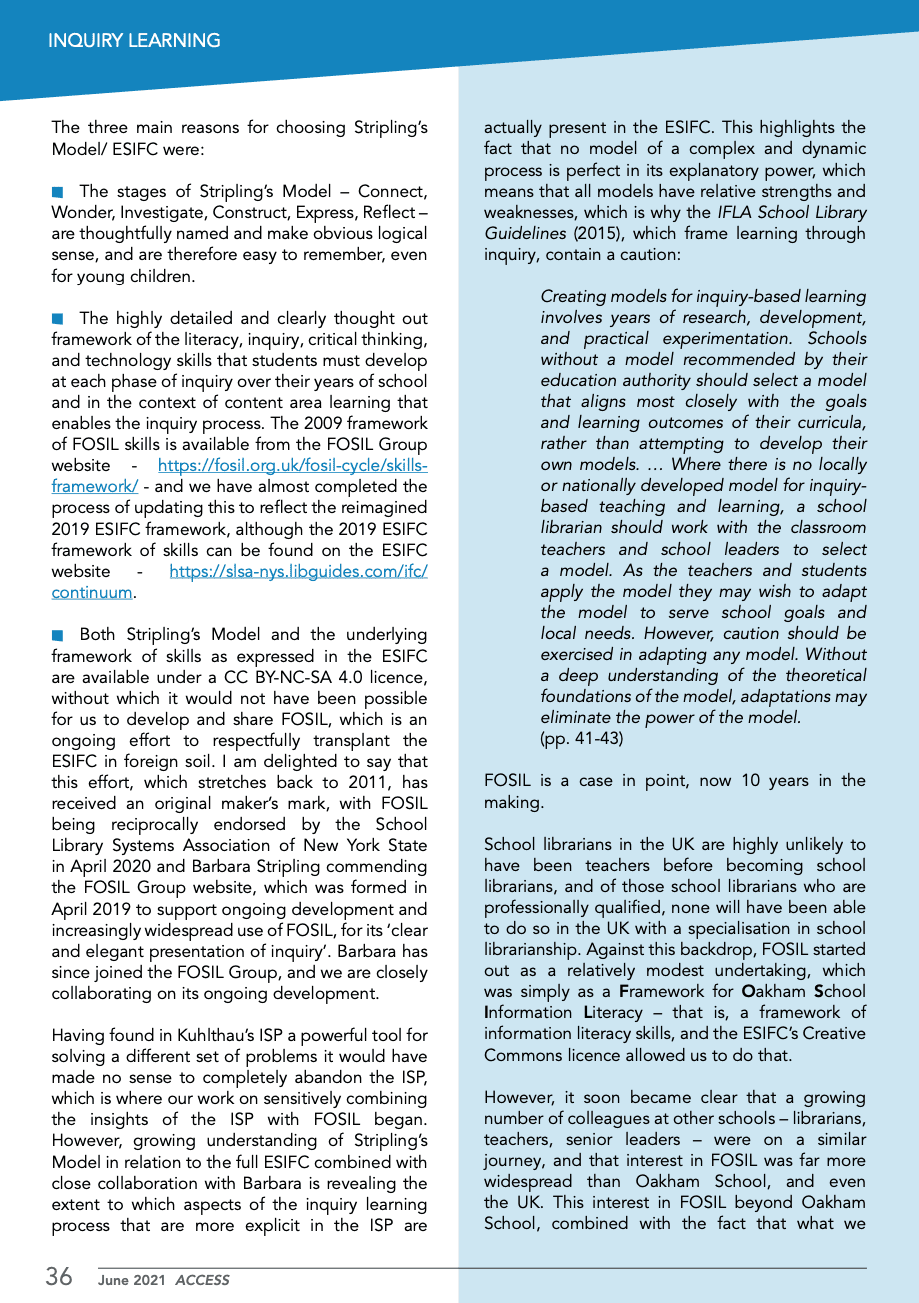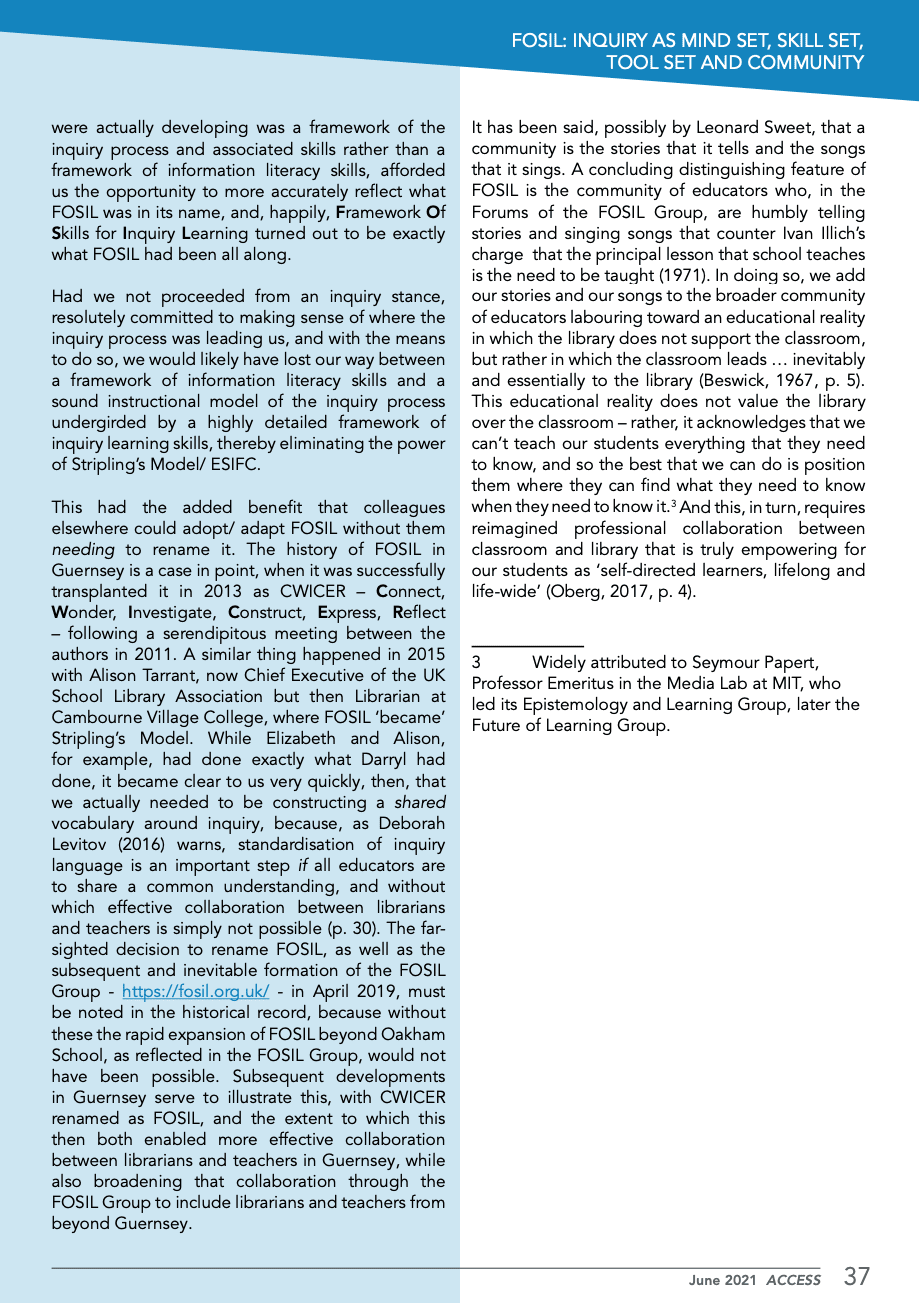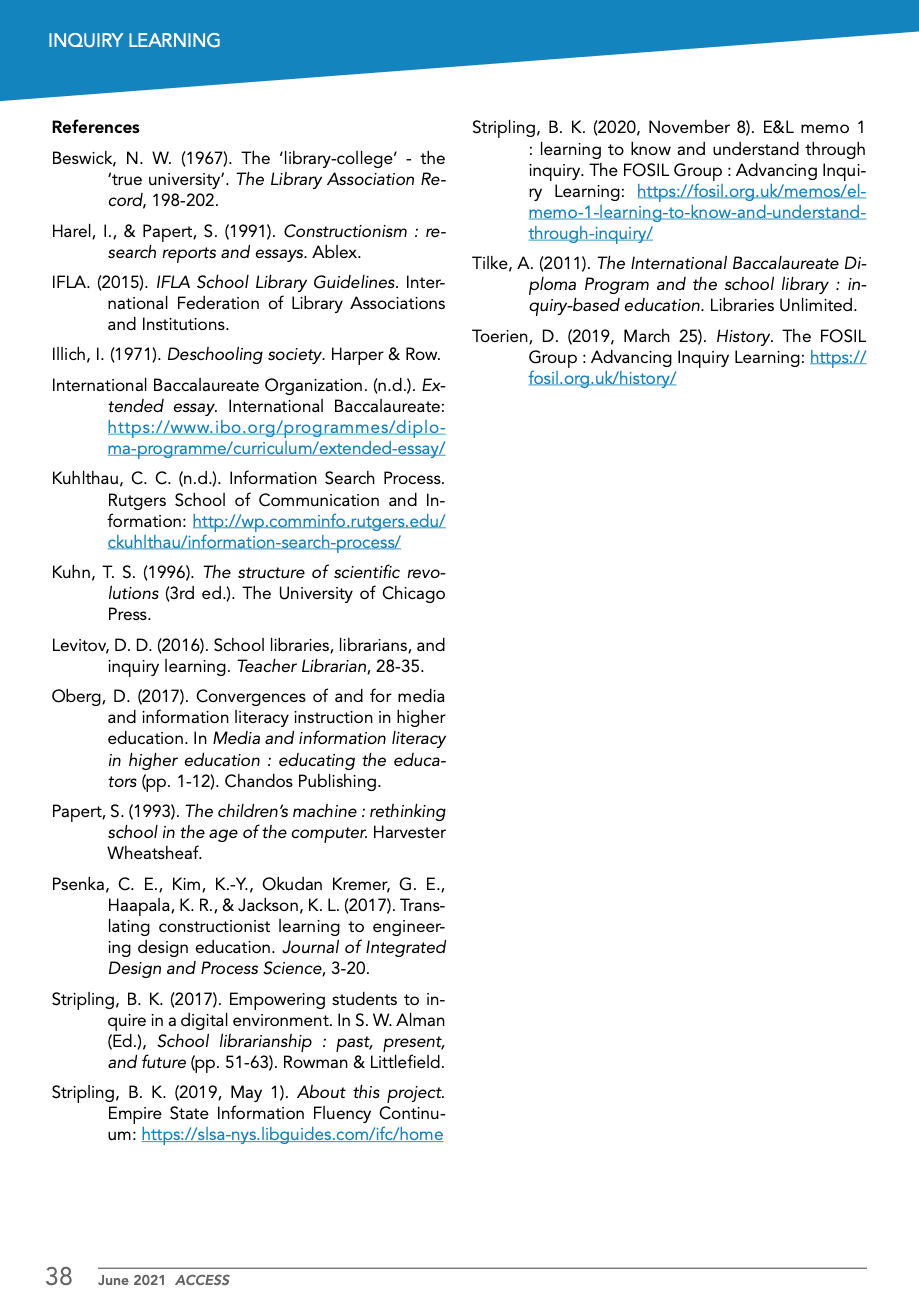As I wrote in my recent article for ACCESS (link to follow), because insight is the endpoint of a long term, iterative process, rather than the starting point, even what seems most familiar to us is laden with insight-generating potential when (re)thought through. This remains the case with FOSIL, and an invitation a year ago to write an article with Elizabeth Hutchinson for ACCESS provided such an insight-generating opportunity.
Our article – FOSIL: Inquiry as Mind Set, Skill Set, Tool Set and Community – which was first published in Volume 35, Issue 2, June 2021 of ACCESS, is shared here (download as PDF or read below) with the permission of the Editor, Lee FitzGerald.

